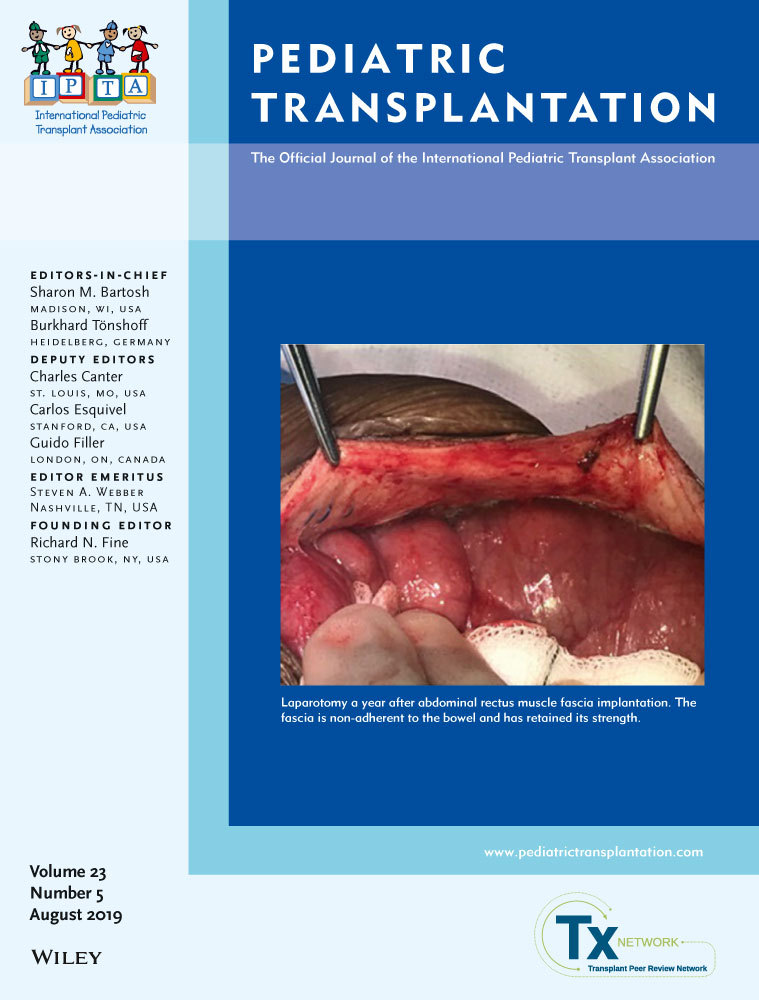Early identification of transplant glomerulopathy in pediatric kidney transplant biopsies: A single-center experience with electron microscopy analysis
Abstract
Banff 2013 criteria recommend performing ultrastructural studies with electron microscopy (EM) in kidney transplant biopsies if the technology is available. We sought to determine the impact of EM on enhancing diagnostic findings in pediatric kidney transplant biopsies and the prognostic information gained from the additional findings. All kidney transplant biopsies since routine EM use started on June 1, 2014, until October 31, 2016, were reviewed. Primary outcome measures included the positive yield frequency of EM use defined as an upgraded diagnosis based on EM findings relative to light microscopy, and 12-month kidney allograft outcome of progression to ESRD or doubling of serum creatinine stratified by transplant glomerulopathy (TG) status on EM. Eighty unique kidney transplant biopsies were reviewed. EM studies were completed for 61 biopsies (76%). Complication rate was low (3.7%). In 61 biopsies where EM was completed, EM findings included foot process fusion (62%), endothelial cell swelling (38%), subendothelial lucencies (31%), and glomerular basement membrane duplication (41%). EM confirmed FSGS recurrence in three cases. In the remaining 58 cases, there was a positive yield of 31% where 18 biopsies were upgraded to a worse category after TG identification on EM. Kidney allograft outcome was poor regardless whether TG was detected early on EM or advanced on LM. Routine EM use in analyzing pediatric kidney transplant biopsies proved safe and provided valuable additional diagnostic information in almost one-third of cases. Additional studies are needed to determine if clinical interventions for early TG identified on EM can improve long-term outcomes.
CONFLICT OF INTEREST
The authors of this manuscript have no conflicts of interest to disclose as described by Pediatric Transplantation. This manuscript was presented in abstract form at the American Transplant Congress 2017 in Chicago, IL and the American Transplant Congress 2018 in Seattle, WA.




